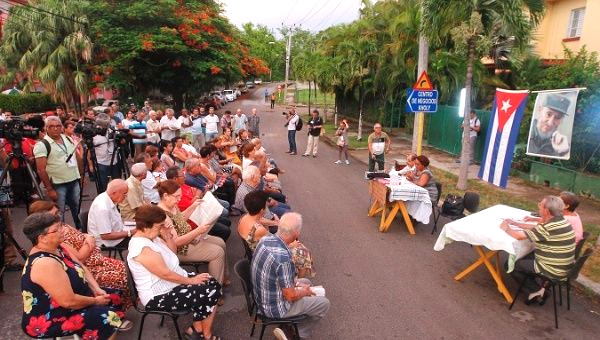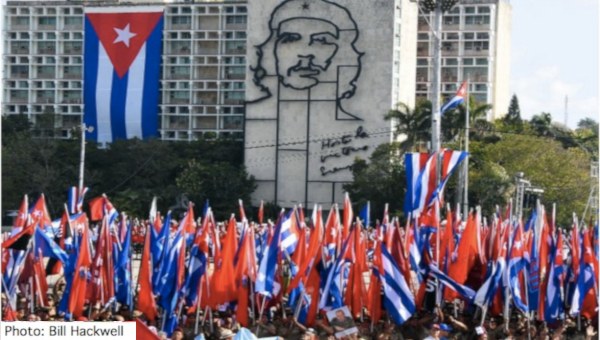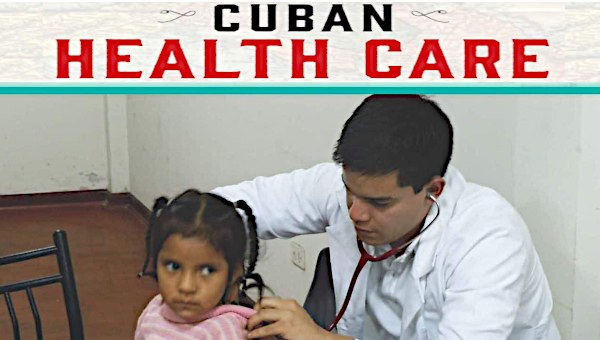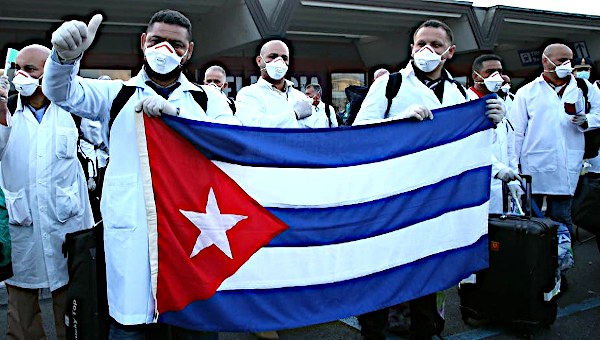Challenges for Cuba’s New Constitution
Cuba is writing a new constitution, part of a lengthy process of political change that can be traced to the 6th Congress of the Communist Party in 2011. The Congress approved a document known as the “lineamientos,” a detailed domestic policy blueprint that opened certain sectors of the economy to market dynamics and “change[d] the structure of employment, reduce[d] inflated payrolls and increase[d] work in the non-state sector.” The plan was to close State enterprises if they don’t generate a profit, with the private sector absorbing laid-off workers. To date less than a quarter of the “lineamientos” have been implemented, reflecting a slow and careful process of change.
 In 2016, the 7th Party Congress approved the “conceptualizacion,” a theoretical outline for economic reform, with particular emphasis on social property and the role of the socialist State. The “conceptualizacion” provided the theoretical framework for the new constitution. In June 2017, the National Assembly of People’s Power established a commission charged with preparing a first draft of the new Constitution. The Party Central Committee reviewed the draft proposal in June of this year, then passed it to the National Assembly for approval in July. Copies of the proposed constitution went on sale the first week of August for the equivalent of about 4 cents (US), the cost of a local newspaper. Free copies are available on the internet (English translation). The comment period is from August 13 to November 15, after which a referendum is expected early next year.
In 2016, the 7th Party Congress approved the “conceptualizacion,” a theoretical outline for economic reform, with particular emphasis on social property and the role of the socialist State. The “conceptualizacion” provided the theoretical framework for the new constitution. In June 2017, the National Assembly of People’s Power established a commission charged with preparing a first draft of the new Constitution. The Party Central Committee reviewed the draft proposal in June of this year, then passed it to the National Assembly for approval in July. Copies of the proposed constitution went on sale the first week of August for the equivalent of about 4 cents (US), the cost of a local newspaper. Free copies are available on the internet (English translation). The comment period is from August 13 to November 15, after which a referendum is expected early next year.
The comment period includes public events organized, in part, by the seven mass organizations – Committees for the Defense of the Revolution, the Federation of Cuban Women, the National Association of Small Farmers, the Cuban Workers’ Federation, the University Student Federation, the Pre-university Student Federation, and the Cuban Writers and Artists Association. Few Cubans are not members of at least one mass organization, and many are members of more than one. More than 135,000 consultations led by 7,600 pairs of trained facilitators will take place across the island and will include some Cuban communities in other countries.
Leading militants in the Communist Party of Cuba were responsible for the first draft of the Constitution. The Party and its youth sector, the Young Communist League, include about a fifth of the population over the age of 16, which indicates broad participation by the most politically active sector of the population. In evaluating the role of the Communist Party, both in the constitutional process and politics as a whole, it is important for folks from the U.S. to draw a clear distinction with the Democratic and Republican parties, where membership can imply as little as a $25 annual donation or a designation on an electoral form. Members of the Communist Party must apply for membership, be recognized for their civic participation, attend regular meetings, and maintain an exemplary moral standing in their community. The current Constitution recognizes the Communist Party as the “leading force of society and of the state,” and the new constitution will almost certainly maintain this role as a vanguard party.
Historical Context
In general, countries do not take lightly the writing of a new constitution – and Cuba is no exception. There are several reasons for this bold move. The current moment is characterized by a transition of political power from the “historic generation,” which fought and won the 1959 revolution, to a new generation, connected to the world via internet and accustomed to free education and healthcare, guaranteed employment, subsidized food and public transportation, and affordable, if scarce, housing. Raul Castro is almost certain to be the last of his generation to be President or head of the Cuban Communist Party. The transition to a new leadership, without the revolutionary credentials, moral authority, or history of socialist struggle, presents a series of challenges.
Cuba is built on seven fundamental principles outlined in the “conceptualizacion”:
- Sovereignty of the nation
- Popular base of the Communist Party
- Universal commitment to social welfare
- Cuban values, with Jose Marti as perhaps the most important referent
- Active engagement by socialist civil society
- Limited controlled engagement in global commerce
- Strong international relations, particularly in the global South and Latin America
Equity is a central element of Cuban socialist values. This was a relatively uncontentious question in the early years of the revolution when Cuba’s constantly growing economy could depend on fair trade prices for nickel, tropical fruits and other exports, plus affordable energy sources and manufactured goods via the Council for Mutual Economic Assistance (COMECON). But with the demise of the Soviet Union in 1990, COMECON ceased functioning – literally overnight – leaving Cuba with serious economic challenges. In the early 1990s, the economy went into recession, known as the “Special Period in times of peace.” The GNP contracted by more than a third and there were widespread shortages of food and fuel, yet the Cuban people remained committed to the socialist project.
Cuba adopted a series of economic policies meant to deal with the crisis in the short to medium term, including rapid expansion of the tourist industry financed, in part, by foreign investment, development of biotech, temporary export of human capital mainly in the form of medical professionals, and reforms in the agricultural sector to improve self-sufficiency. The results were impressive for such a poor country. From 1995 through 2008, the island nation experienced some of the highest GDP growth in the western hemisphere. In 2000, Venezuela and Cuba signed an agreement that provided 115,000 barrels of petroleum per day in exchange for the work of thousands of Cuban doctors in areas of Venezuela that were severely underserved in terms of health care. Due to recent unrest in Venezuela, by 2016 oil shipments dropped to 42,000 barrels per day.
Economic results in Cuba have been less stellar since 2009 with an average annual growth just under 2%. This isn’t bad for an economy under constant threat from the internationalized U.S. embargo, but it is hardly sufficient to recover from the devastation of the early 1990s. Without robust economic growth, socialist equity ends up being defined by the distribution of pain rather than plenty.
Closely linked to equity is the question of exploitation, which is central to a Marxist reading of society. Marx’s labour theory of value is essentially a definition of exploitation as a social condition in which one person steals the labour of another to accumulate individual wealth. The 1976 Constitution prohibits Cubans from “procur[ing] income derived from exploitation of the work of others.” Cubans face a challenging question in moving toward limited private enterprise while maintaining a socialist understanding of wealth accumulation as a collective process that should be for the benefit of the entire society.
This leaves Cuba with a fundamental theoretical/practical problem – is socialism constructed primarily (or at least in the final instance) on the development of an abundant material foundation by whatever means, or primarily on the socialist consciousness of the population? In the final analysis, Marx was a materialist (though as a consummate dialectician, he clearly recognized a dynamic relationship between materialism and idealism), while both Fidel Castro and Che Guevara advocated the centrality of socialist consciousness. Cuba tends to emphasize central planning with limited market openings and development of culture, education, and foundational concepts like equity and socialist consciousness. By comparison, the Chinese Communist Party is taking the road of “socialist modernization” or “market Marxism.”
Each model offers a distinct understanding of work and, in particular, how to discipline labour to efficiently produce the abundance that can serve as the foundation of a socialist society in transition to communism. The market mechanism in combination with private ownership of the means of production yields a disciplined labour force through the threat of poverty (or starvation in the worst of cases), whereas socialist consciousness depends on the collective will of workers to contribute according to their abilities and take according to their needs (or according to their contributions – depending on the level of social development). Using brute production as a measure, the market mechanism has often been more effective at creating abundant surpluses, though certainly not at distributing those surpluses equitably. However, there is no reason central planning cannot be as efficient as market mechanisms. Given the development of new computer models, central planning may prove to be more efficient by avoiding the widely recognized excesses and herd mentality of private economic actors, and the regular crises that are inherent to capitalism.
Cuba clearly recognizes the importance of labour discipline and the production of sufficient surplus to satisfy an increasingly globally linked population. In 2007, in his first major speech as President, Raul Castro focused on economics. A Cuban worker receives a salary, Raul said, that “is clearly insufficient to satisfy all necessities, and hence has practically stopped fulfilling the role of assuring the socialist principle of ‘from each according to his capacity and to each according to his work’.” That failure brings “social indiscipline” – read petty theft and black market activity to make ends meet – that is “difficult to eradicate.” In 2010, Raul Castro addressed the other side of the coin when he announced layoffs of thousands of government workers and limited privatization of parts of the economy: “We have to erase forever the notion that Cuba is the only country in the world where one can live without working.” Free education and healthcare can be internalized in two contradictory and irreconcilable ways – as rights without accompanying responsibilities, or as the result of collective struggle. The first is a product of individualism, the second of collective political consciousness. With increasingly easy access to Hollywood films, U.S. television, and other sources of capitalist propaganda, it’s not hard to understand the challenges involved in developing collective consciousness.
Segmentation of the economy into tourist sectors, where workers have easy access to hard currency, and State sectors, in which salaries are paid in Cuban pesos, makes the challenge even greater. Labourers in the tourist sector can often earn as much in one day as State labourers earn in a month. While promotion of the tourist sector was important for economic recovery after the demise of the Soviet Union, it came with a price in terms of decreasing equity and socialist commitment. This is part of the challenge for the new Constitution.
Given the impact of the U.S. embargo and the existence of counter-revolutionaries in south Florida intent on returning Cuba to a purely capitalist path, unbridled “market Marxism” may not be an option for socialist Cuba. The U.S. embargo began in 1962, inspired by a State Department official who proposed “a line of action that makes the greatest inroads in denying money and supplies to Cuba, to decrease monetary and real wages, to bring about hunger, desperation and the overthrow of the [Castro] government.” The embargo is nothing short of a recipe for capitalist counter-revolution. Over the past six decades, the cost to Cuba has been about $130-billion (US) in today’s dollars. For a country with a current annual GDP of less than $90-billion (US), the impact is substantial.
With a huge land mass and a fifth of the world’s population, China is building an efficient market economy with a mandate to avoid “social tension” (ie, class conflict). Given an island with 11 million people only 90 miles from Florida, is this even an option for Cuban socialism? China is concerned mainly with containing internal class conflict, whereas, a priori, Cuba must concern itself with class conflict initiated from the USA. While Cuba is in the process of moving carefully into some market mechanisms, the heights of the economy will remain centrally planned and controlled. In China, “market Marxism” is grounded in social unity, foreign investment, and increased trade characterized by a robust integration with global markets. With the U.S. embargo in place, these are not realistic options for Cuba. Cuba’s understanding of a Marxist/Leninist system is grounded in class struggle, sustainability, closely controlled foreign investment, a nationalist private sector, and international solidarity, particularly in Latin America. The new constitution will outline the legal framework required for limited markets while confirming the socialist nature of the State and the leading role of the Communist Party. As Raul Castro reminded during the 7th Party Congress, “We cannot ignore the influence of powerful foreign forces who call for the empowerment of non-state forces to try to create agents of change in hopes of ending the revolution and socialism in Cuba.”
Provisions of the New Constitution
In economic terms, the new constitution will provide legal foundations for private businesses and their ability (limited) to contract wage labour, plus the right to own private property. Already, new regulations for private enterprises are scheduled to take effect in December. According to William LeoGrande, an academic based at American University, “they have two broad purposes: to enable the state to capture a greater share of the revenue that private businesses generate, while also minimizing illegal behavior and protecting public safety; and to limit the growth of individual businesses in order to prevent the accumulation of wealth and property.” The new regulations will crack down on tax evasion and black market transactions that have become rampant in the private sector, while also providing a solid legal foundation for legitimate enterprises.
The new Constitution will legalize same-sex marriage, reflecting a cultural change generations in the making. For more than a decade, Raul Castro’s daughter, Mariela Castro-Espin, has assumed a leadership role in promoting LGBTQ rights as head of the State-sponsored National Center for Sex Education (CENESEX). Where once revolutionary governments sent LGBTQ people to re-education camps, now the State, along with NGOs and community-based organizations, are leading a society-wide re-education campaign that lends credence to the importance of education in consciousness raising. Mariela said, “Before, there was prejudice against talking about these things. Eleven years ago we started holding seminars about homophobia and transphobia. And that helped to pave the way for dialogue among the population.” Newly appointed President Miguel Diaz-Canel was an early supporter in Villa Clara Province where he mobilized Party resources and his own political clout to support an LGBTQ cultural center, the first of its kind in Cuba.
The Constitution will restructure the State in important ways. The new positions of Prime Minister and provincial Governors will handle the day-to-day administration of State policies, while the President will be in charge of strategic development and the overall direction of the country. Similar to parliamentary systems or the U.S. Electoral College, the President will be elected by the National Assembly rather than direct popular vote. The Prime Minister will be nominated to a five-year term by the President and approved by the National Assembly. There will likely be a third President overseeing both the National Assembly and the Council of State. The National Assembly meets only twice a year under normal circumstances, while the Council of State is in permanent session and is responsible for many of the executive functions of the State. In general, the idea is to separate long-term strategic planning and policy development from direct implementation, thereby establishing results-based accountability.
The new constitution will likely be in place sometime next year. •
This article first published on the ausm.community website.





